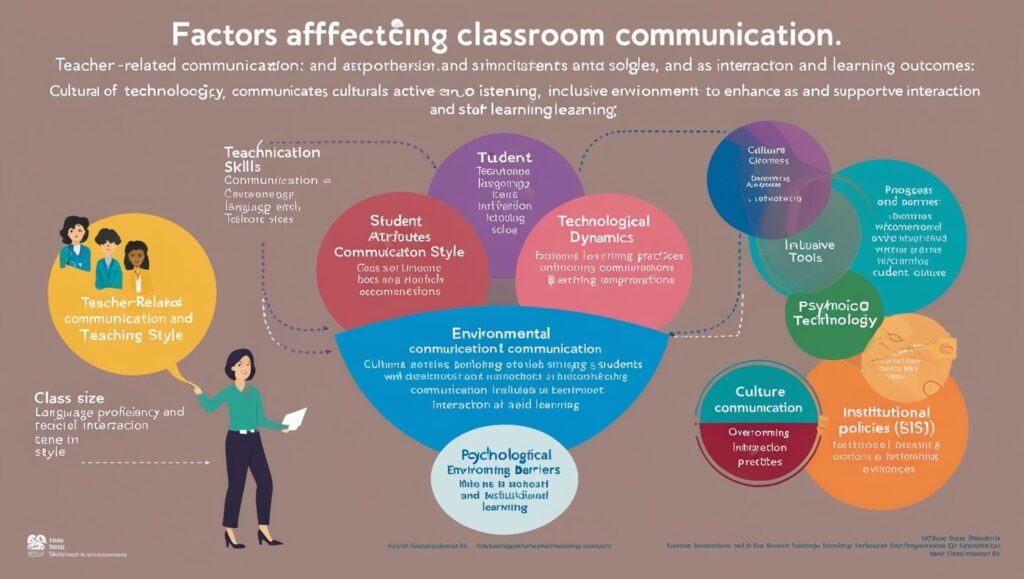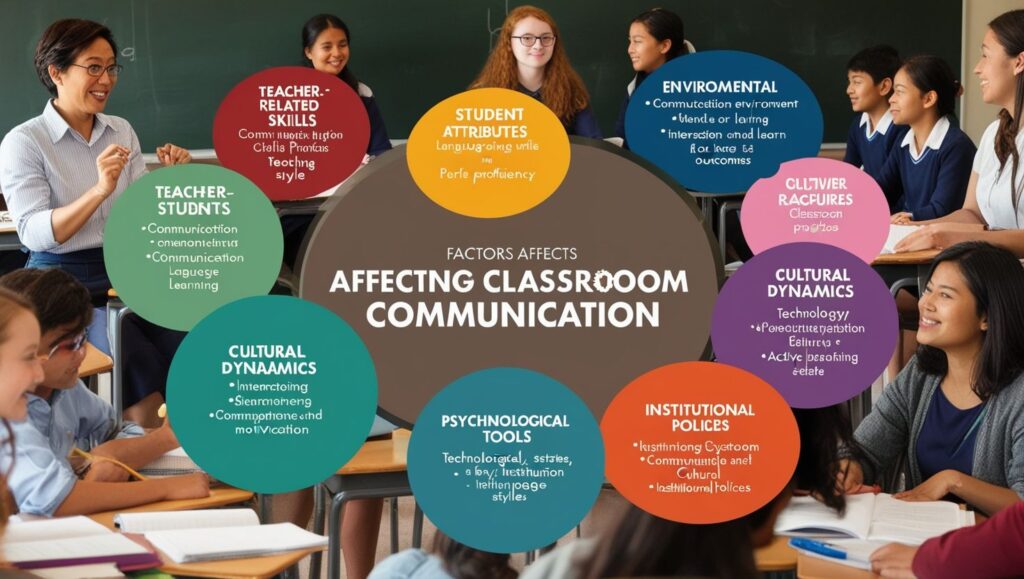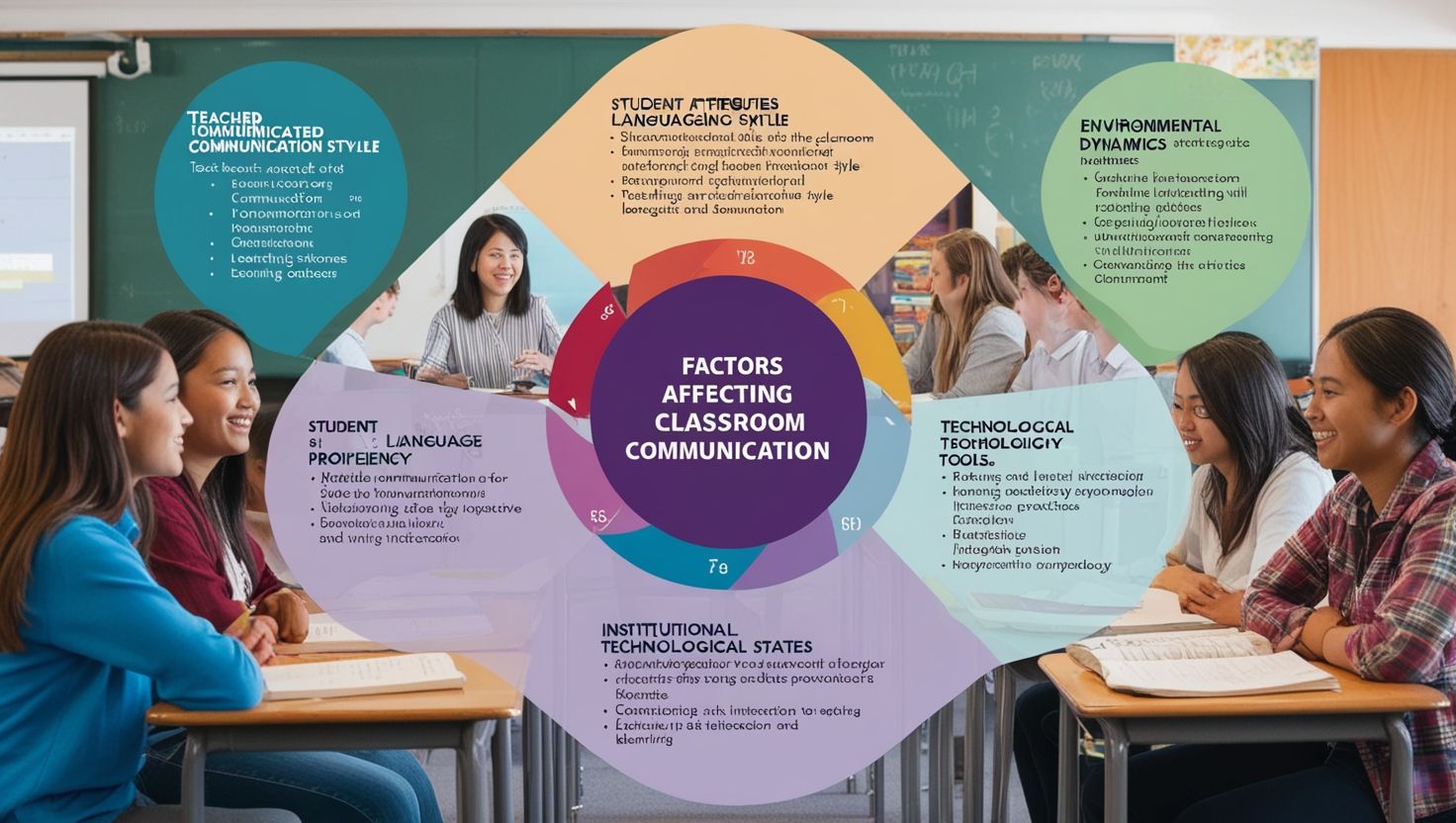Factors Affecting Classroom Communication, Effective classroom communication is fundamental to the teaching and learning process. It establishes a bridge between the teacher and students, fostering an environment where knowledge is shared, ideas are explored, and skills are developed. However, several factors influence the quality and effectiveness of this communication. Understanding these factors is crucial for creating a positive and inclusive learning environment.
1. Teacher-Related Factors
The teacher’s role is pivotal in shaping classroom communication. Certain attributes and behaviors of teachers significantly impact the flow of communication.
- Communication Skills: Teachers with strong verbal and non-verbal communication skills are better equipped to convey complex ideas effectively. Clear articulation, appropriate tone, and active listening foster better engagement.
- Subject Knowledge: A teacher’s mastery over the subject matter instills confidence and enhances their ability to explain concepts comprehensively, which is critical for effective communication.
- Attitude and Approachability: A teacher’s openness, patience, and willingness to address questions create an environment where students feel comfortable communicating.
- Teaching Style: Interactive and participatory teaching styles encourage dialogue and reduce the barriers between teachers and students.
2. Student-Related Factors
Students are the recipients and contributors to classroom communication. Their characteristics and attitudes play a significant role.
- Language Proficiency: Students’ ability to understand and express themselves in the medium of instruction directly impacts communication. Language barriers can hinder active participation.
- Cultural Background: Cultural norms and values influence how students perceive and engage in communication. In diverse classrooms, cultural differences may create misunderstandings if not addressed sensitively.
- Emotional and Psychological State: Anxiety, lack of confidence, or fear of making mistakes can inhibit students from participating in discussions or asking questions.
- Motivation and Interest: Students who are motivated and interested in the subject are more likely to actively engage, ask questions, and participate in classroom activities.
3. Environmental Factors
The physical and social environment of the classroom significantly influences communication dynamics.
- Classroom Layout: The arrangement of seating and furniture can either facilitate or hinder interaction. Circular or U-shaped seating arrangements promote dialogue, while traditional row setups may limit it.
- Class Size: Smaller class sizes often result in better communication as teachers can give individual attention to students, whereas larger classes may make students feel overlooked.
- Acoustics and Lighting: Poor acoustics and inadequate lighting can distract and make communication challenging, especially in larger classrooms.
- Distractions: External noises, interruptions, or poorly maintained infrastructure can break the flow of communication.
4. Cultural and Social Dynamics
The classroom is a microcosm of society and reflects its diversity. Social and cultural factors shape the interaction patterns within the classroom.
- Cultural Diversity: Multicultural classrooms require teachers to be culturally sensitive and inclusive. Miscommunication can arise from different interpretations of gestures, expressions, or communication norms.
- Gender Dynamics: In some contexts, societal norms about gender roles can influence participation. Teachers need to ensure equal opportunities for communication regardless of gender.
- Peer Influence: Students may be hesitant to speak up due to fear of judgment or ridicule from peers. Creating a respectful and supportive peer culture is essential.

5. Technological Factors
In modern classrooms, technology is both a facilitator and a potential barrier to communication.
- Access to Technology: Tools like interactive whiteboards, projectors, and learning management systems can enhance communication. However, lack of access or technical issues can disrupt the process.
- Digital Literacy: Both teachers and students need to be proficient in using technological tools to ensure smooth communication, especially in blended or online learning environments.
- Over-Reliance on Technology: Excessive use of technology can sometimes overshadow face-to-face interactions, reducing personal engagement and connection.
6. Linguistic Factors
The language used in the classroom affects the clarity and effectiveness of communication.
- Language Complexity: Using overly technical or complex language can confuse students. Simplifying concepts without diluting content is an essential skill for teachers.
- Code-Switching: In multilingual settings, teachers may switch between languages to aid understanding. While helpful, this practice should be balanced to avoid alienating students unfamiliar with certain languages.
- Jargon: Discipline-specific jargon can hinder comprehension if students are not familiar with the terms.
7. Psychological Factors
The mental state of both teachers and students influences the communication process.
- Stress and Fatigue: High stress levels or fatigue can reduce the effectiveness of communication for both teachers and students.
- Self-Perception: A teacher’s confidence in their communication abilities and a student’s self-esteem impact their willingness to engage in discussions.
- Feedback and Reinforcement: Constructive feedback encourages participation and ensures that students feel valued and understood.
8. Contextual Factors
The broader context within which the classroom operates also shapes communication dynamics.
- Curriculum Demands: A rigid or overloaded curriculum can leave little room for interactive communication, focusing instead on one-way delivery of content.
- Institutional Policies: Policies regarding classroom conduct, participation, and the use of technology influence communication practices.
- Time Constraints: Limited time for lessons may force teachers to prioritize content delivery over interactive discussion.

9. Barriers to Effective Communication
Despite best efforts, barriers to effective communication often arise in classrooms. These include:
- Noise: Internal or external noise disrupts focus and creates misunderstandings.
- Bias and Stereotyping: Preconceived notions about certain students or groups can affect interaction quality.
- Resistance to Change: Both teachers and students may resist adopting new communication methods or tools.
Strategies for Enhancing Classroom Communication
To overcome these challenges, teachers and institutions can adopt various strategies:
- Active Listening: Teachers should practice active listening to understand students’ needs and concerns better.
- Interactive Techniques: Incorporating group discussions, debates, and role-playing exercises promotes communication.
- Inclusive Practices: Recognizing and respecting cultural and linguistic diversity fosters a more welcoming environment.
- Feedback Mechanisms: Regular feedback sessions allow students to express their views and highlight areas for improvement.
- Professional Development: Teachers should undergo training in communication skills and cultural competency.
Conclusion
Classroom communication is a dynamic and multifaceted process influenced by numerous factors, including teacher and student characteristics, environmental conditions, cultural diversity, and technological advancements. By identifying and addressing these factors, educators can create an inclusive, engaging, and effective learning environment. Emphasizing strategies like active listening, cultural sensitivity, and the integration of technology ensures that classroom communication remains a powerful tool for knowledge dissemination and personal growth.

6 thoughts on “Factors Affecting Classroom Communication”
Comments are closed.